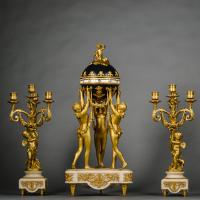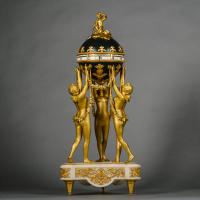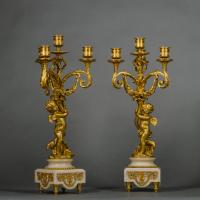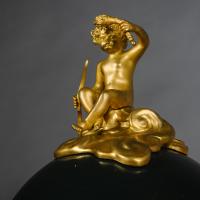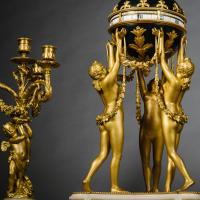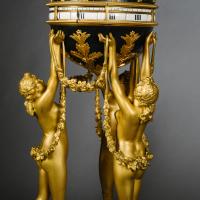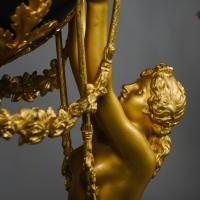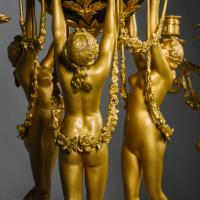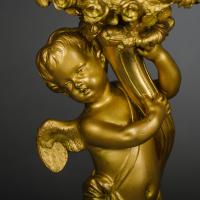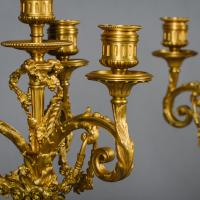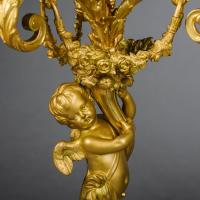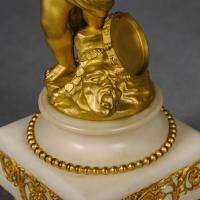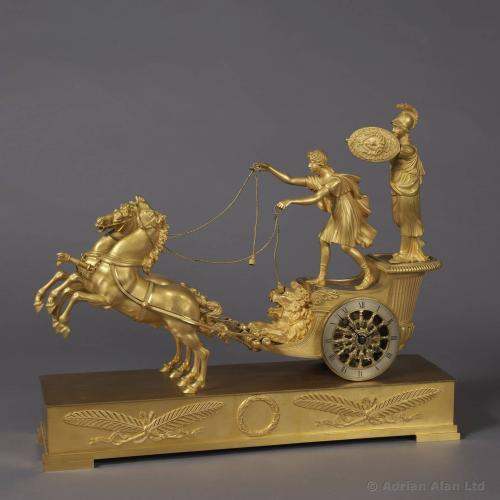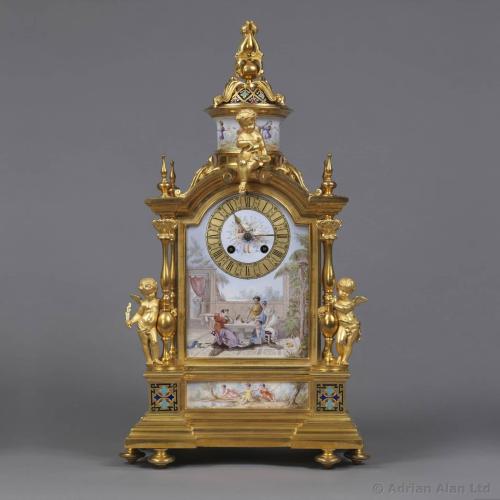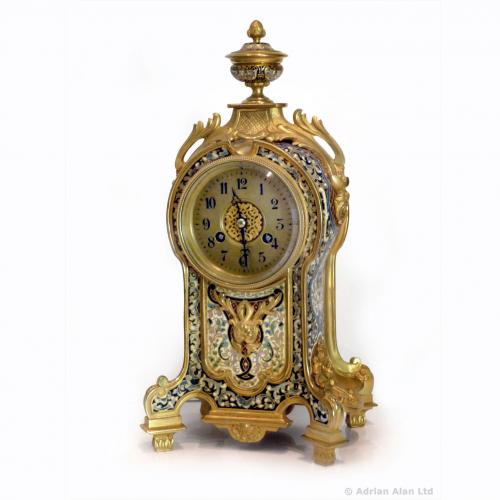
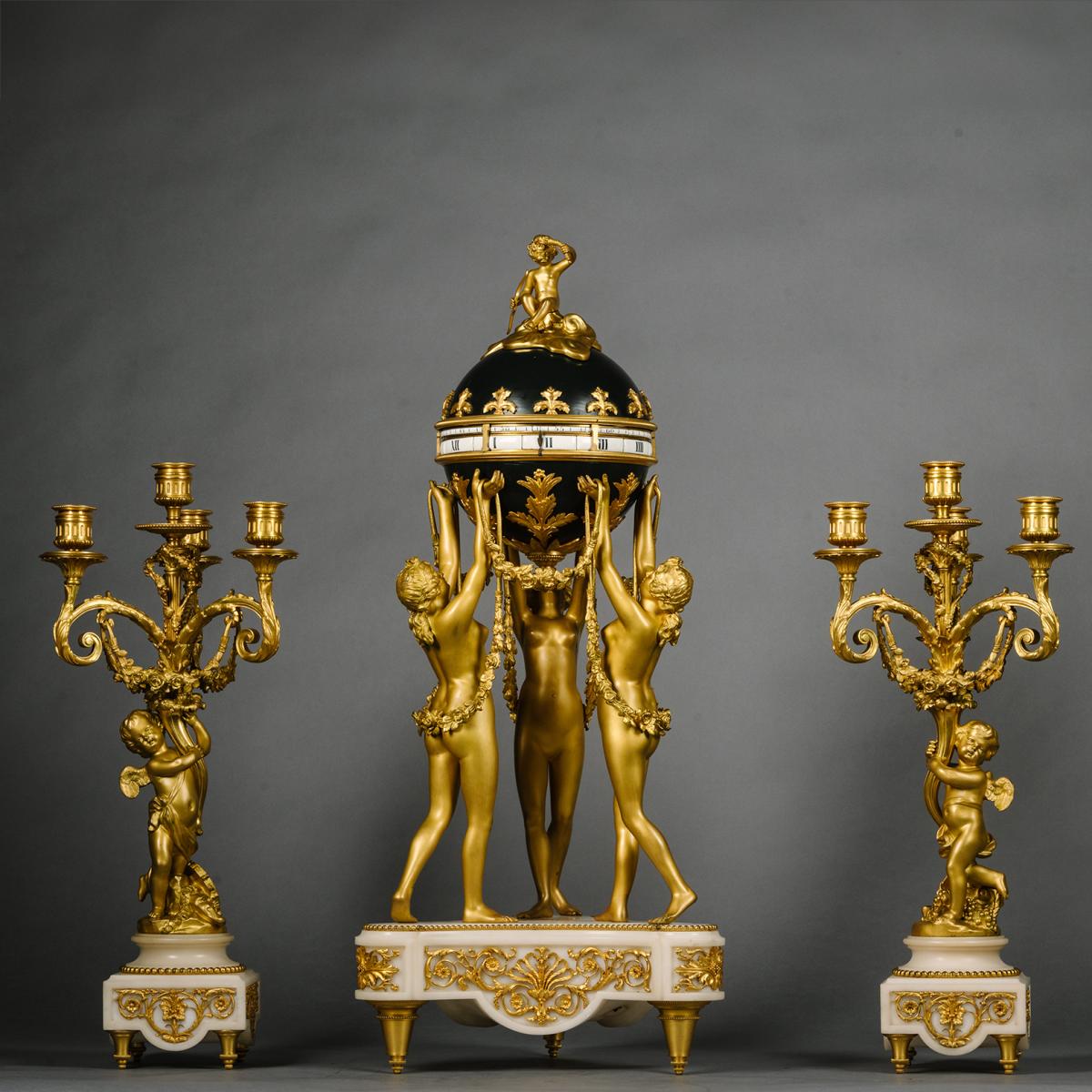
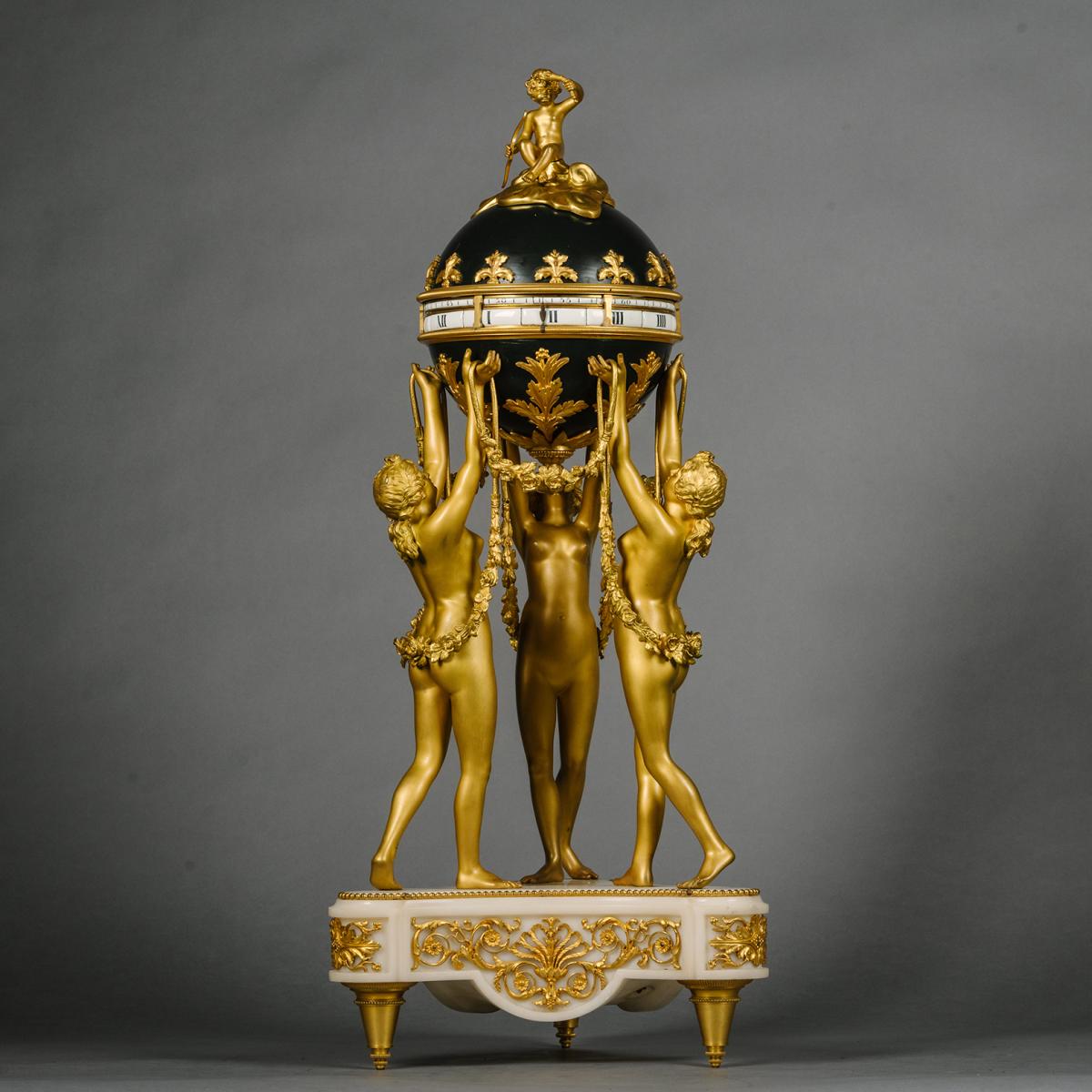
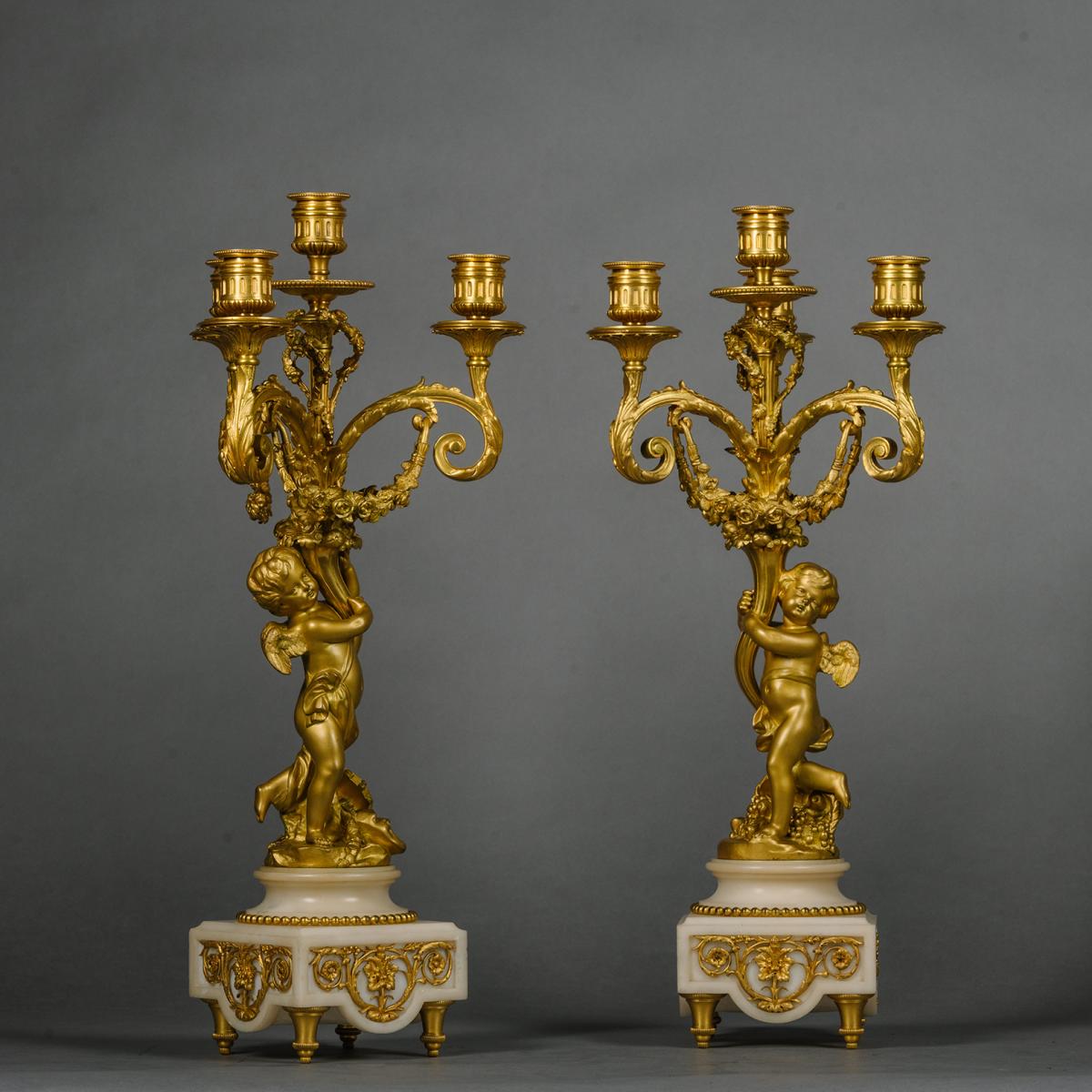
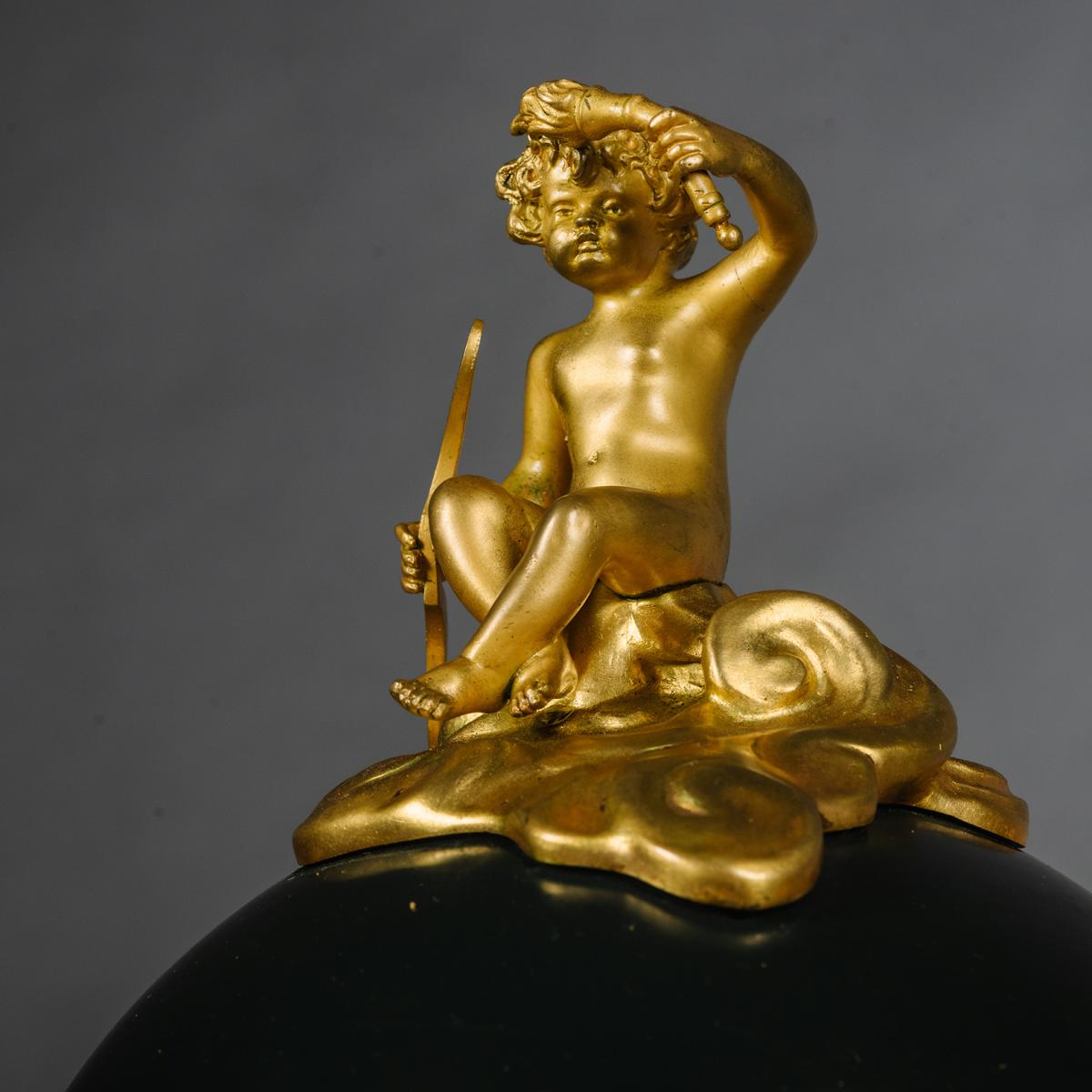
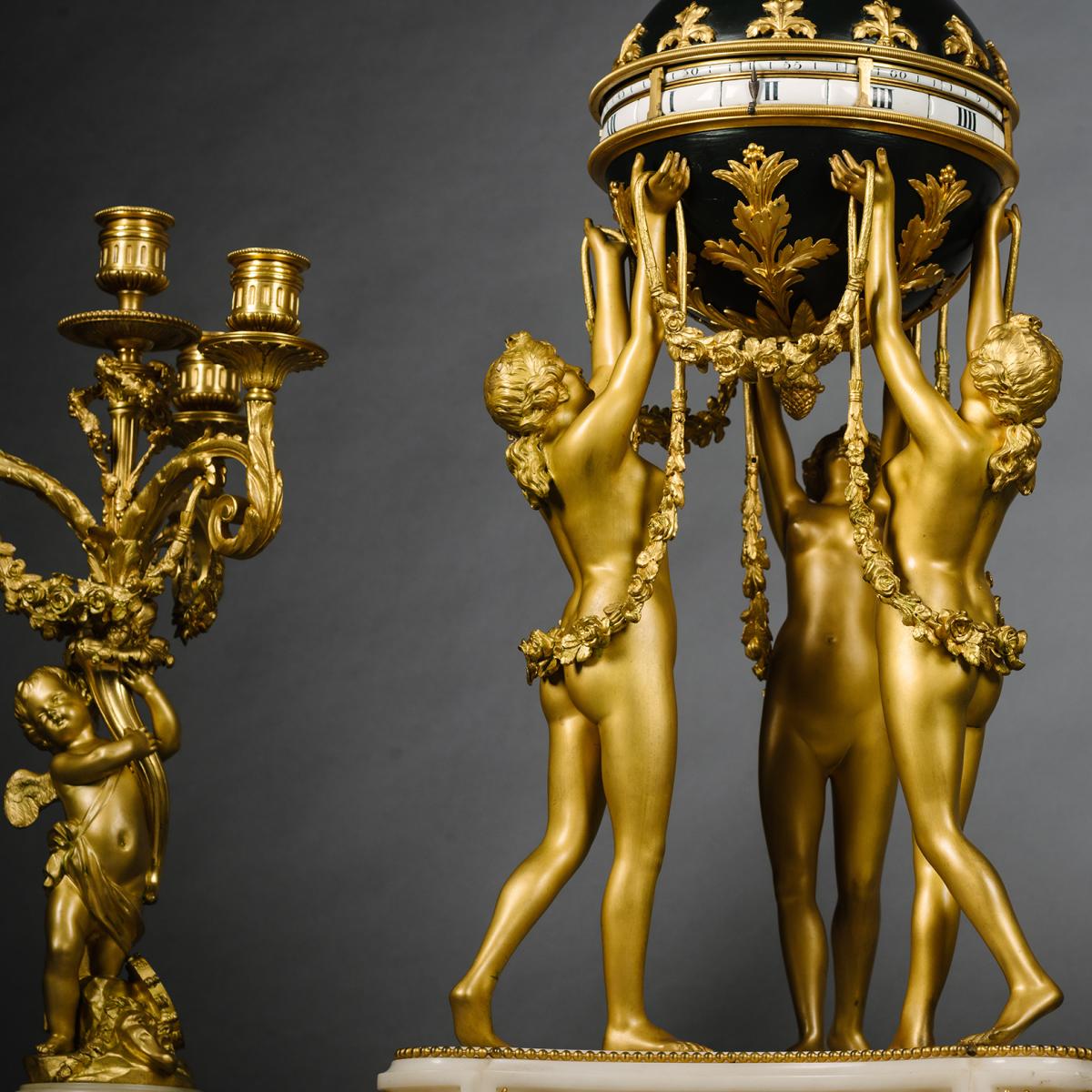
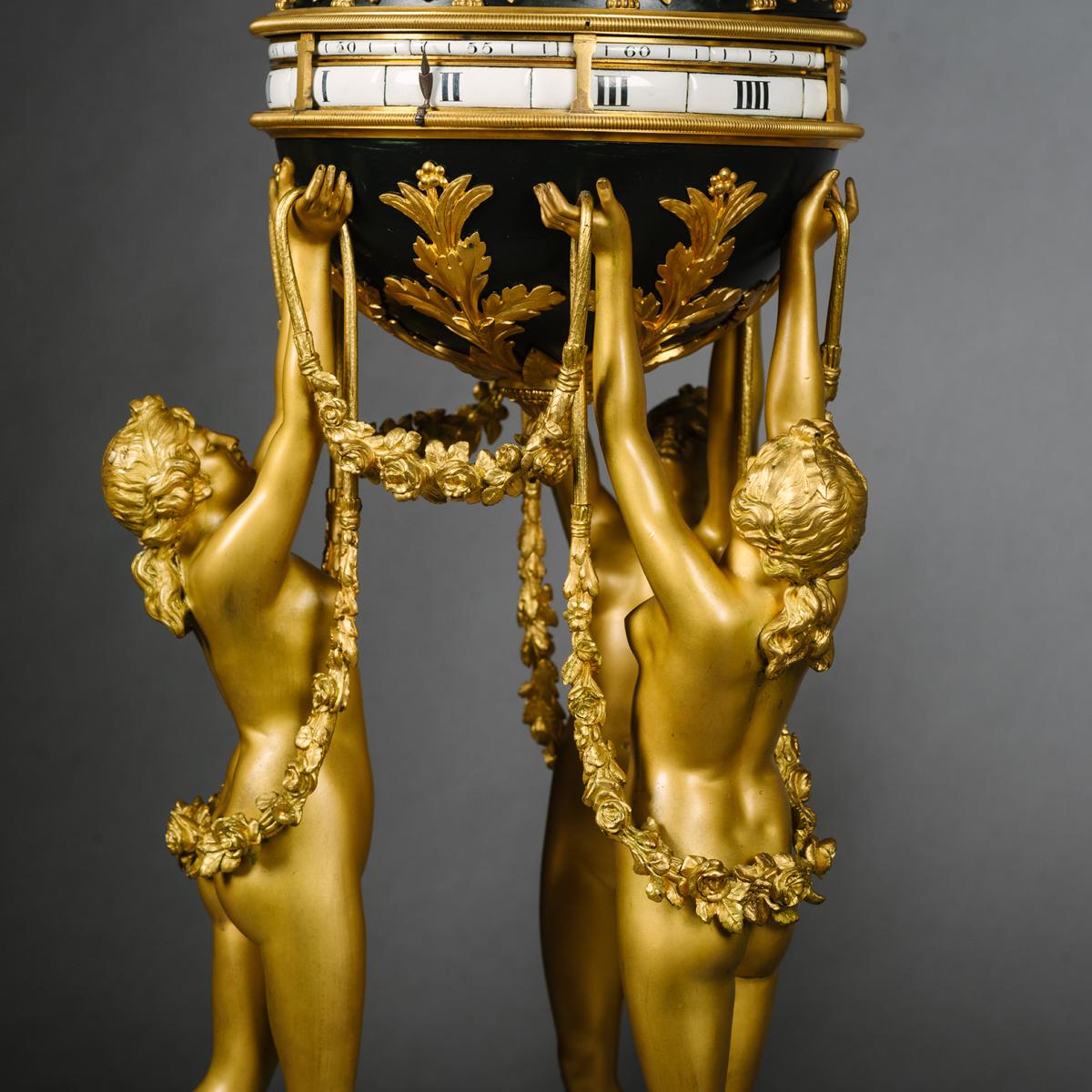
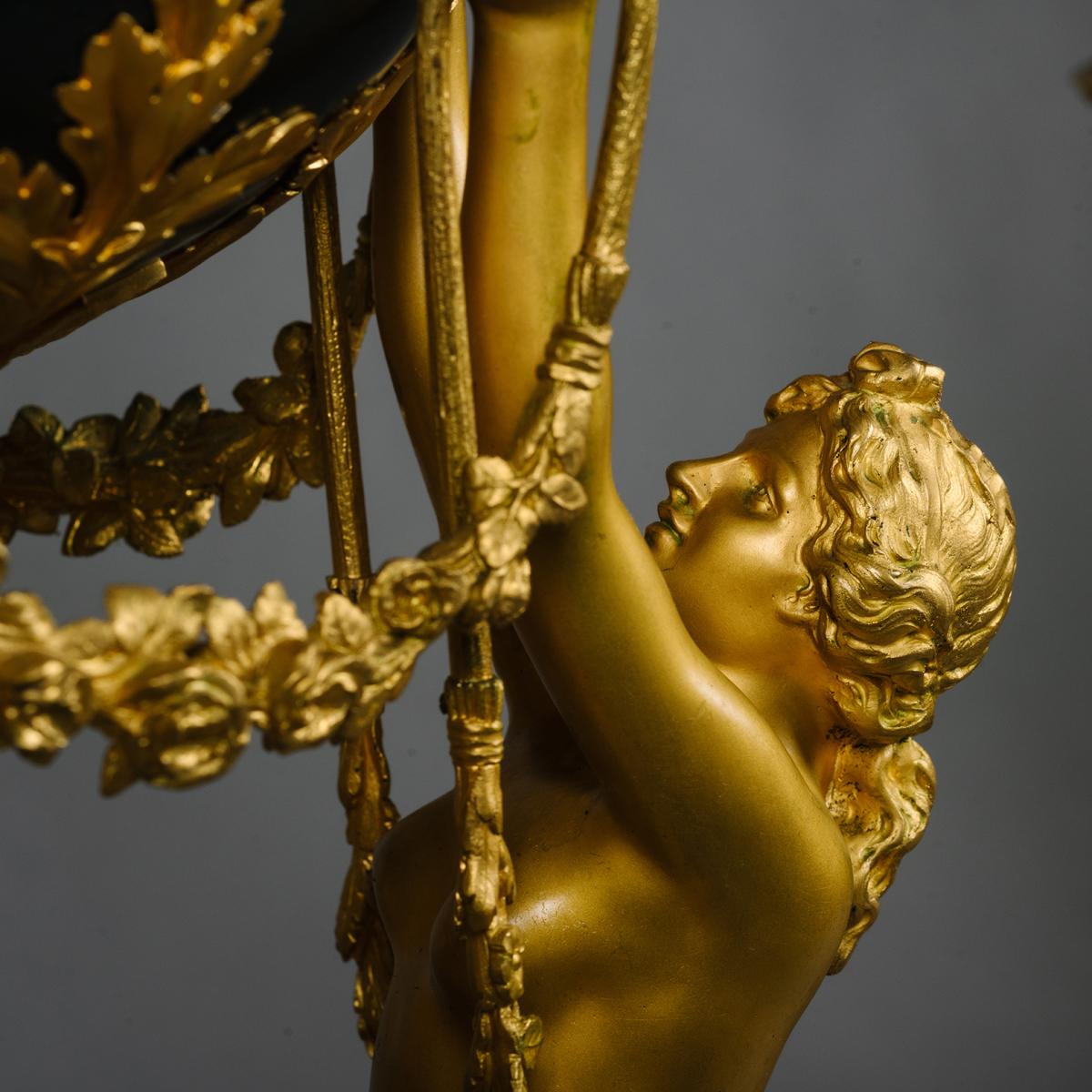
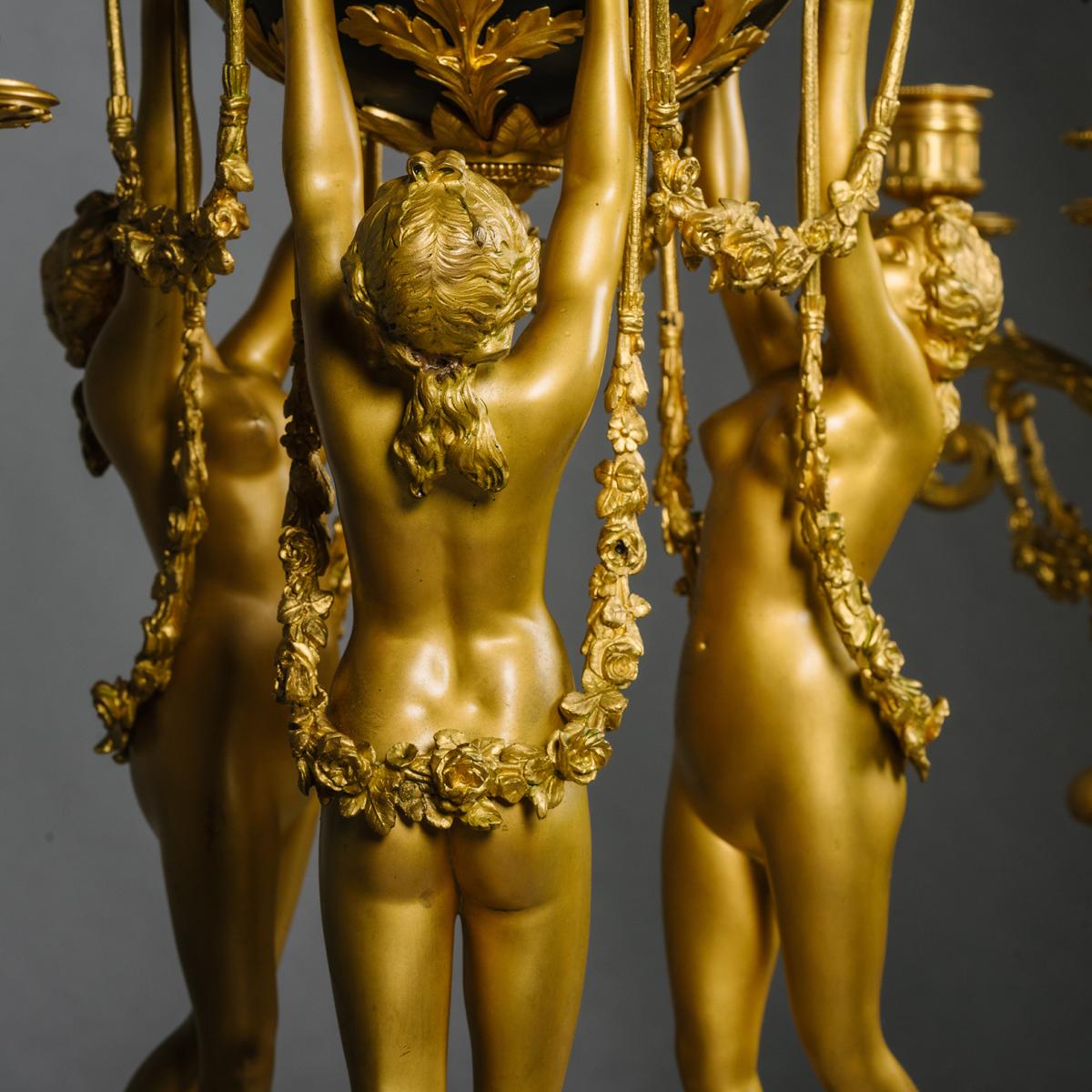
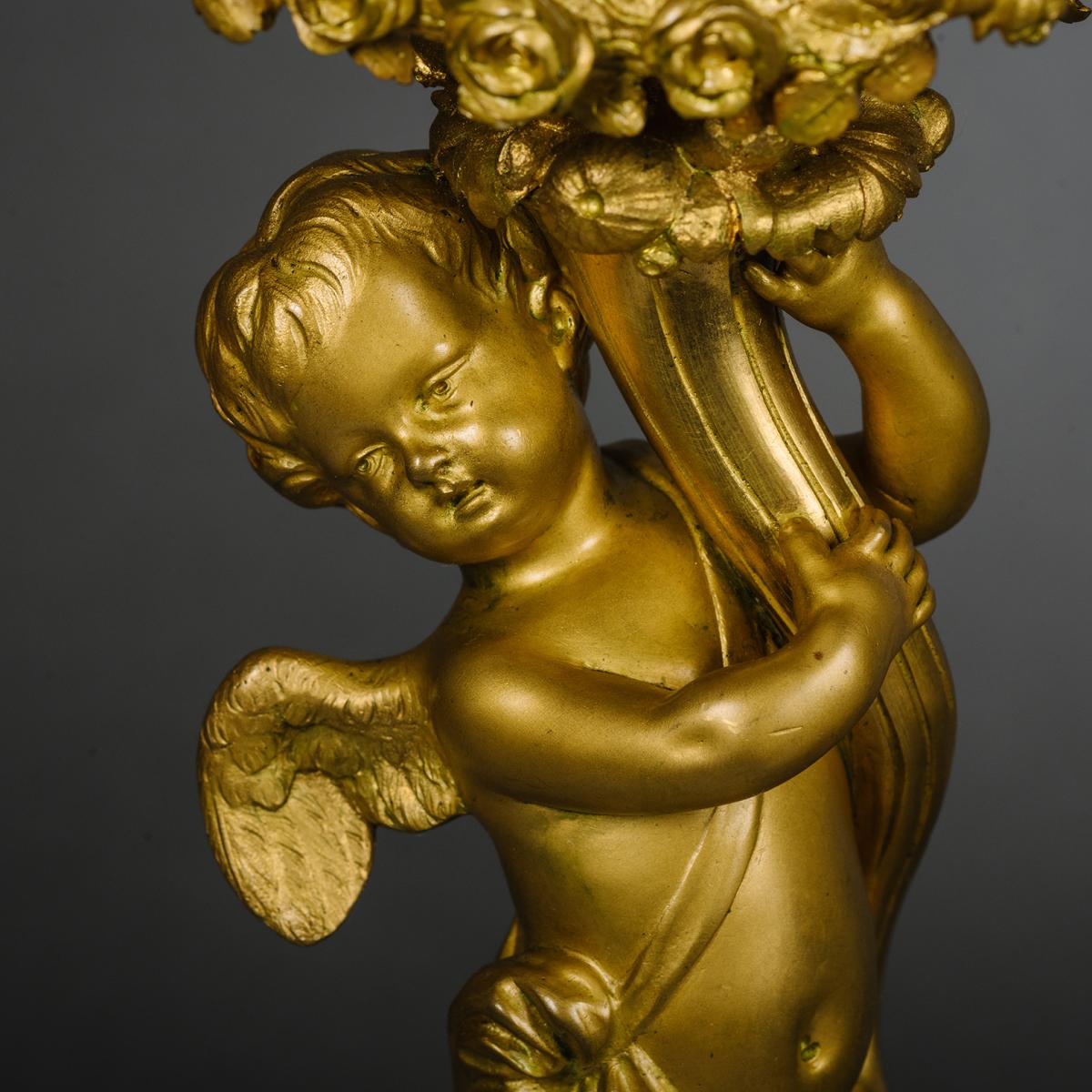
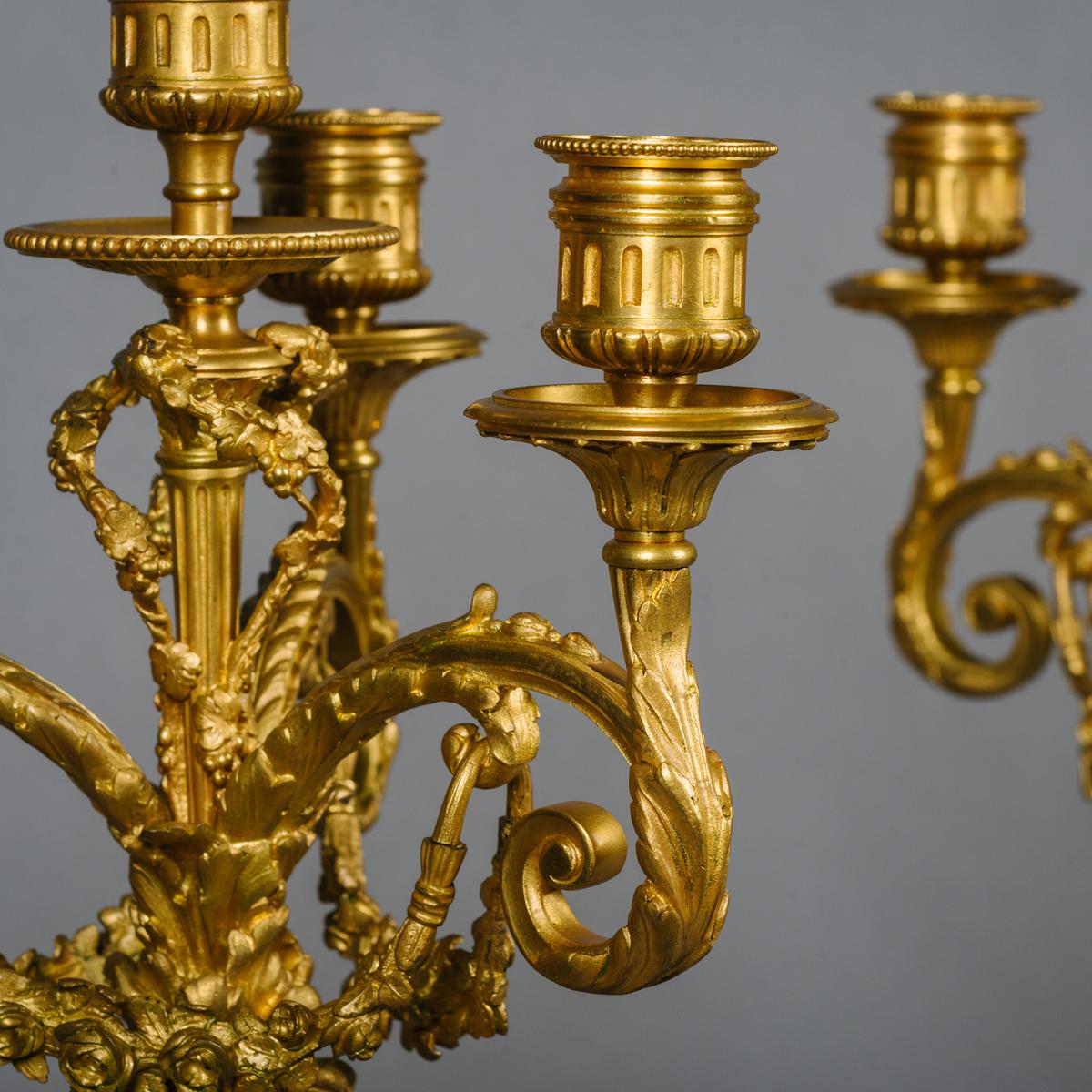
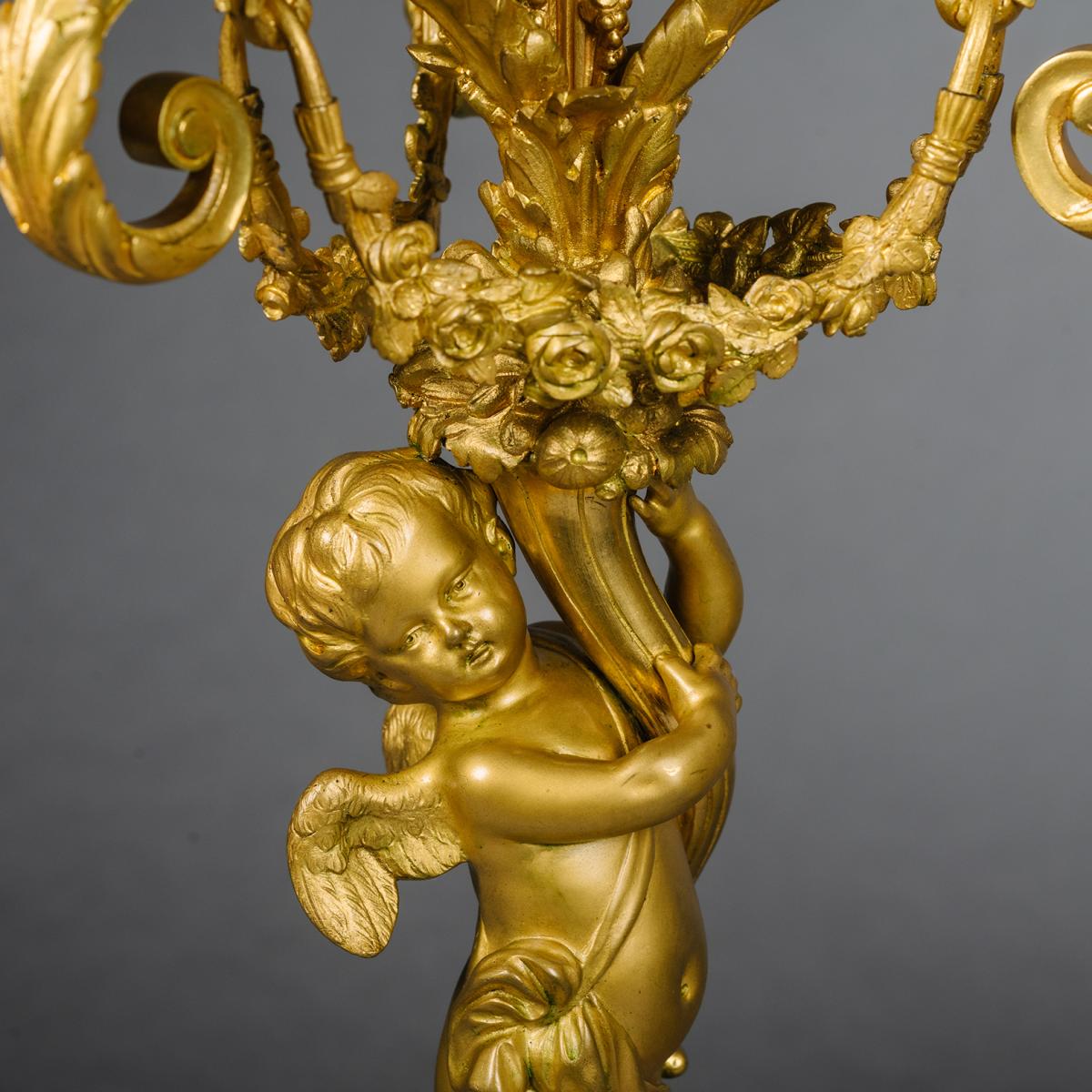
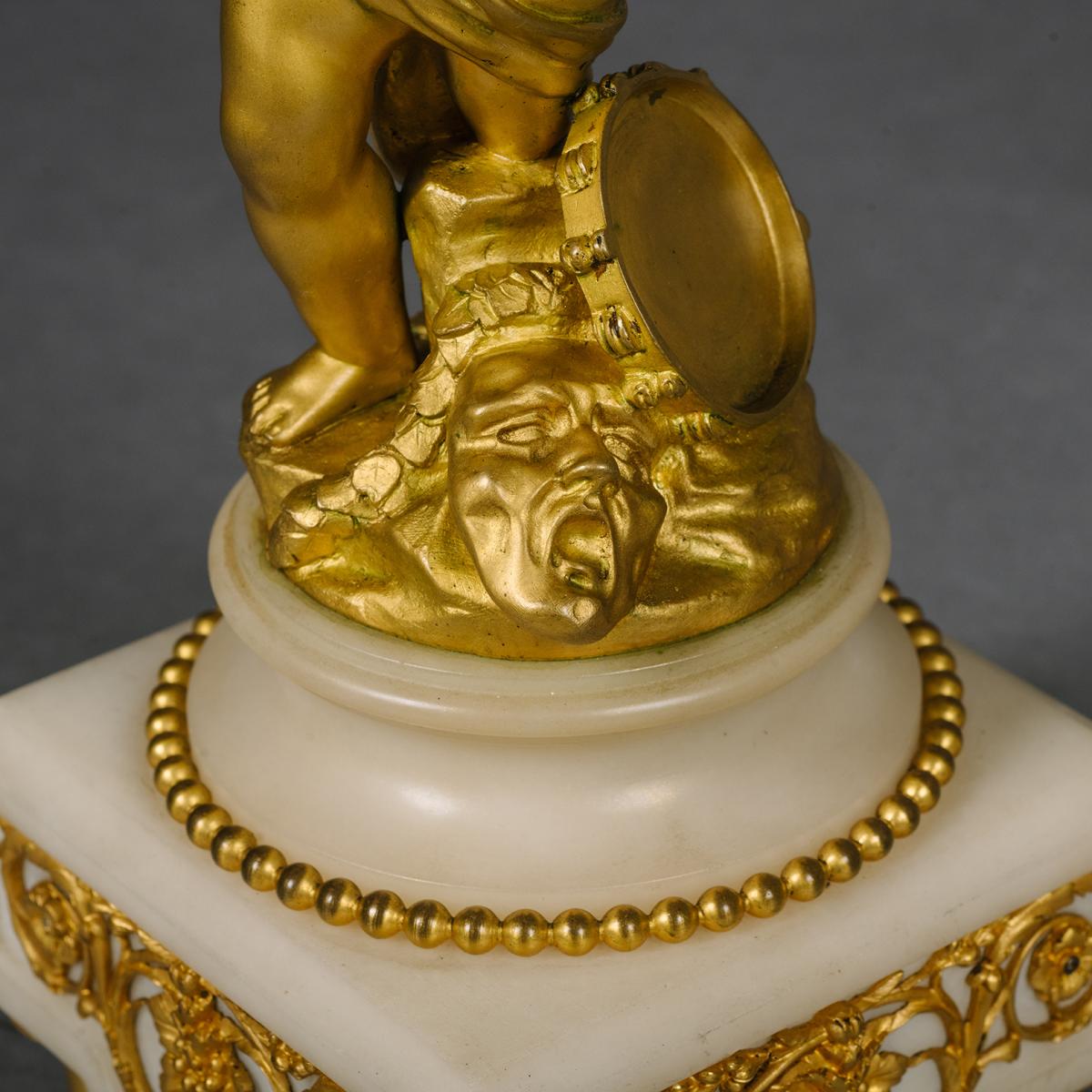
Price on application
This object is eligible for a Certificate of BADA Provenance
The BADA Standard
- Since 1918, BADA has been the leading association for the antiques and fine art trade
- Members are elected for their knowledge, integrity and quality of stock
- Our clients are protected by BADA’s code of conduct
- Our dealers’ membership is reviewed and renewed annually
- Bada.org is a non-profit site: clients deal directly with members and they pay no hidden fees
A Louis XVI Style Gilt and Patinated Bronze and Marble Clock Garniture, Comprising a 'Pendule à Cercles Tournants' Modelled with the Three Graces and a Pair of Cherub Four-Light Candelabra, By Jollet & Cie.
Each stamped with cachet 'JOLLET & CIE / BRONZE PARIS ANC. MON COLIN'. The clock movement stamped ‘A C’ within a circle.
The clock is modelled with The Three Graces draped with floral garlands and holding aloft a blue tole sphere. The sphere contains the clock workings which drive a rotating chapter ring enamelled with Roman numerals. The figures stand on a white marble tripartite plinth, the frieze of which is set with pierced gilt-bronze anthemion scrollwork. The plinth is raised on toupie feet. The candelabra are modelled en suite with cherubs holding cornucopias issuing a central nozzle surround by three lights.
France, Circa 1890.
The Louis XVI antecedent of this model is not known but it was popularly produced in the nineteenth century by different Parisien makers. An example with gilded bronze figures is in the Violet Room at the Château de Chantilly and described as dating to Circa 1775. However Camille Mestdagh has identified that the clock was delivered by Maison Beurdeley to the Duc d’Aumale for his château of Chantilly.
The design can be credited to the sculptor Claude Michel Clodion (1738 –1814) with comparison to a related figural clock known as ‘The Dance of Time’ which has three nymphs supporting a glass sphere. This clock has also been compared to the Three Graces clock designed by the fondeur François Vion, a drawing of which is reproduced in an album of designs now conserved in the Bibliothèque Doucet, Paris (VI E 15, Rés.fol.20/1). Described as ‘Le temps qui passe entre l’amour et les Grâces’, an example can be seen at the château de Fontainebleau (Inv.F918 C).
In the last quarter of the nineteenth century the model is recorded to have been made by Henry Dasson, Maison Beurdeley and, as here, Jollet & Cie.
The clock:
Height 75 cm | 30 inches
Width 32 cm | 13 inches
Depth 29 cm | 11 inches
The candelabra:
Height 54 cm | 21 inches
Width 23 cm | 9 inches
Depth 21 cm | 8 inches
Literature:
Another example of this clock in the collection of the Fitzwilliam Museum, Cambridge, is illustrated in H. Ottomeyer and P. Proschel, Vergoldete Bronzen, vol. 1, Munich, 1986, No. 6.3.11, p.425.
Dimensions
Height : 75 cm 30 inches Width : 32 cm 13 inches Depth : 29 cm 11 inchesStock number
B77421The BADA Standard
- Since 1918, BADA has been the leading association for the antiques and fine art trade
- Members are elected for their knowledge, integrity and quality of stock
- Our clients are protected by BADA’s code of conduct
- Our dealers’ membership is reviewed and renewed annually
- Bada.org is a non-profit site: clients deal directly with members and they pay no hidden fees


